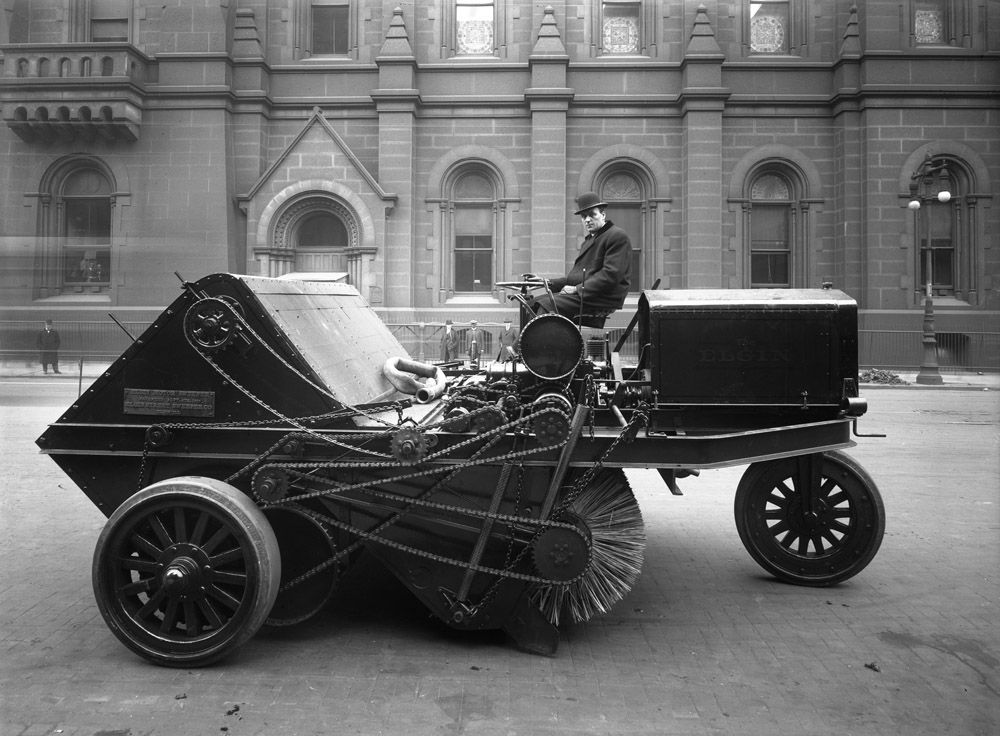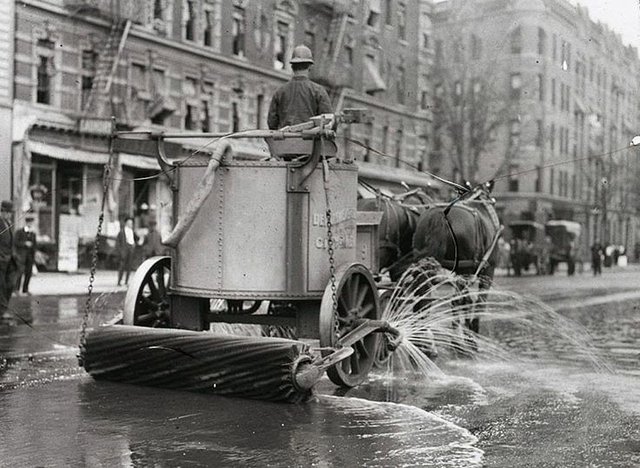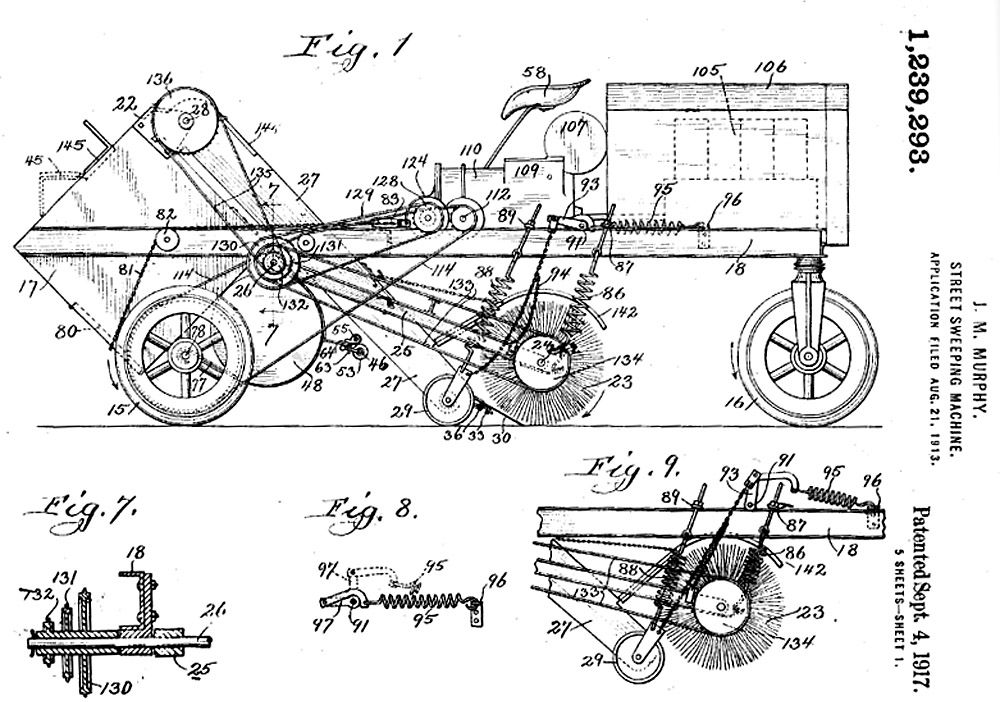Savoring the Photograph at a Vintage Visual Feast
With a Light Marinade of Historical Research
Hello Steemit! Ken Finkel (the Philadelphia History Guy) here. This post is the first of a series where I'll be excavating the hidden narratives of vintage photographs. Part of my work as a historian involves digging into the City Archives collection (more than 100,000 images of which are online) from the late 19th and 20th centuries. In this post, we'll break into some of the stories behind an unusual street cleaning machine photographed one hundred years ago. Hope you enjoy!

In 1911, the first machine-powered street sweeper was supposed to accomplish twice the work at half the cost, but its engine moved it along at a snail’s pace and its inability to maneuver only caused traffic jams.
John M. Murphy, an Illinois farmer who dabbled in windmills, seized the opportunity and developed a new and improved “Street Sweeping Machine,” which he patented in 1917. It wouldn’t damage the pavement, or raise dust, or leave behind debris. The “Elgin Motor Sweeper,” as Murphy dubbed it, (after the factory’s home town of Elgin, Illinois) rendered obsolete the wasteful, time consuming methods of street cleaning by hand and with horse-drawn vehicles.
(It would be a hard sell. American politicians loved their marching broomsmen—they guaranteed massive numbers of patronage jobs for newly-arrived immigrants. And the public loved their water-spouting, horse-drawn contraptions that resembled ancient Roman chariots—except those were a LOT slower.)

Murphy’s claim: “This remarkable machine places street cleaning upon an efficient, economical basis. Operated by one man, the Elgin Motor Sweeper replaces a whole army of men with brooms, or horse drawn apparatus. In a single eight hour day, at a cost of from 12 to 15 cents per 1,000 square yards, including the sweeping of gutters and the disposal of refuse, it cleans from 100,000 to 130,000 square yards of pavement.” And Murphy’s agile machine could keep up with automobile traffic.
“News of the fantastic new sweeper spread to Pocatello, Idaho—to Portland, Oregon,” boasted a company history. In 1915 Murphy filled orders for 15 Elgins. In 1916 he sold 23. And in 1917, the year the U. S. Patent Office awarded him patent #1,239,293 for the invention, he sold 42. That’s when Philadelphia bought its first, as told in this post at PhillyHistory. Officials were so proud they summoned their new acquisition to City Hall for a photo op.

Stay Tuned for Next Time: Good Images Pay; Great Images Pay Dividends

Like;)
Fascinating imagery from this mysterious *Elgin Motor Sweeper *... Looks like a tractor with its pants on backwards. But really, looking forward to more in this series of investigative histories @kenfinkel!
A little heavy on the zippers, though. Don't you think?
Zippers?
I would love to learn more about the marching broomsmen!
Finkelstein here.....